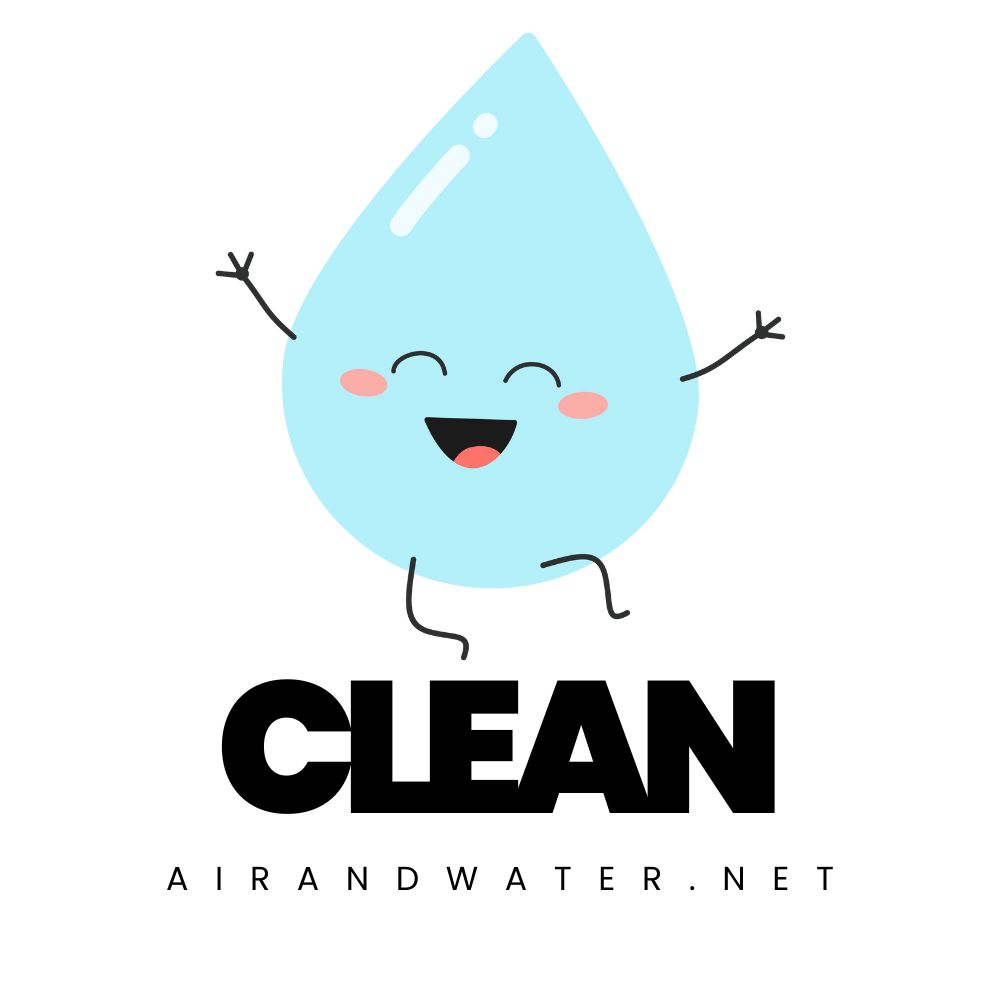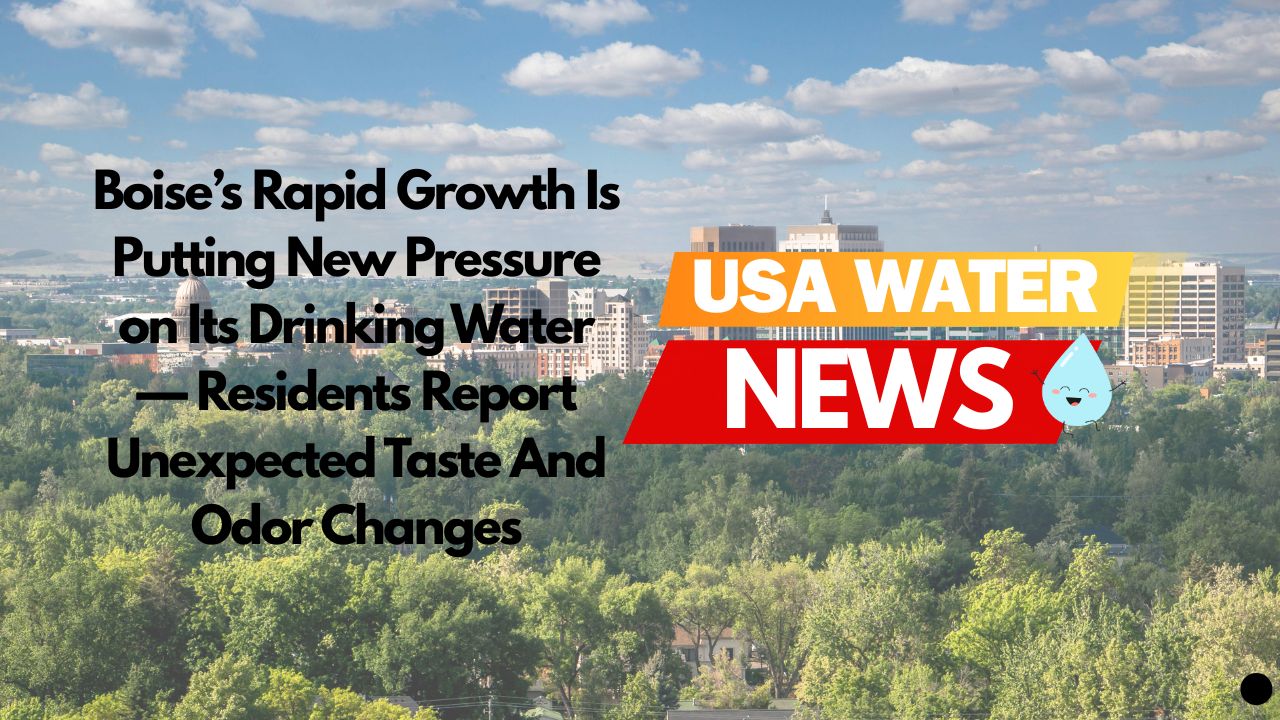Boise has been one of America’s fastest-growing cities for nearly a decade. A place once known for quiet neighborhoods, mountain views, and slow-paced living is now welcoming tens of thousands of new residents every year. But while that growth has brought new businesses, schools, and housing developments, it has also created a problem most people don’t expect:
The city’s water treatment system is having to adjust far more quickly — and more often — than planned.
Over the past month, Boise residents in several neighborhoods have been calling the city to report unusual taste and odor changes in their tap water. Some describe it as “earthy,” others say it “tastes too treated,” and a few have noticed water turning cloudy for a short period after turning on the tap.
Boise WaterShed, the city’s utility operator, says the water remains safe and continues to meet state and federal regulations — but the experience at the tap is being shaped by something few residents would connect to water:
Population growth.
A City Growing Faster Than Its Water Infrastructure Was Designed For
Boise’s population has increased by more than 25% in the last decade. New subdivisions are going up at the edges of the city. Former farmland is becoming housing. And with every new neighborhood, the distance water travels from treatment plant to tap gets a little longer.
Longer distribution lines mean:
- Greater temperature changes
- More chance for chlorine residual to fluctuate
- More air pockets and pressure shifts
- Faster development of taste changes during seasonal transitions
The city’s treatment plants were not built for this pace of expansion — not because they were poorly designed, but because no one expected Boise to grow this fast.
And when a system is pushed to its limits, the smallest shifts in weather or water source can suddenly become noticeable to the people drinking it.
Warm Weather + Rapid Demand = Taste Changes
Boise relies heavily on surface water from the Boise River and groundwater from local aquifers. But warmer-than-normal winter temperatures and a rapid increase in demand have caused the city to modify its treatment process earlier in the year than expected.
These adjustments aren’t dangerous — but they can be noticeable.
Boise WaterShed staff say they increased disinfectant concentrations slightly in February to maintain regulatory protection as demand surged earlier than usual. When disinfectant reacts with natural organic matter from the river, temporary taste differences can emerge.
Most Boise residents never notice these subtle adjustments — but this year, more people than usual are calling.
Not because anything is wrong.
But because more pipes + more distance + more houses = more variation.
Cloudy Water Appearing More Often — A Sign of Pressure Fluctuations
Cloudy or milky water, which then clears from the bottom upward, has been reported in northern and western neighborhoods.
Boise’s engineers explained that this is classic entrained air — tiny bubbles formed when:
- New subdivisions connect to existing water mains
- Flow direction changes
- Pressure rises or drops suddenly
- Temperature changes occur between the treatment plant and new housing developments
As the city grows, pipes are being extended, valves opened, lines flushed, and water flow patterns altered. Every time the system “breathes” to accommodate new neighborhoods, some residents may see cloudy water temporarily.
Again, this isn’t contamination — it’s hydraulics.
No Violations, but More Adjustments Ahead
Boise continues to meet:
- EPA Maximum Contaminant Levels
- Idaho Department of Environmental Quality standards
- EPA Stage 2 DBP rules
- PFAS monitoring requirements (Idaho has relatively low detections)
But the city acknowledges that as growth continues, the system will need:
- Expanded treatment capacity
- More redundancy
- Shorter residence times
- Additional monitoring points
- Updated pressure management zones
The city is already planning major upgrades, many of which will take several years.
How Residents Are Experiencing the Changes
For most Boise residents, the water still tastes the same. But in certain areas — especially those on the city’s expanding edges — people describe subtle shifts:
“It tastes a little earthy this week.”
“It smells stronger than usual.”
“My water looked cloudy for a minute.”
While these experiences are mild and temporary, they’re important signals of a system adapting to rapid growth.
Boise WaterShed has increased its public communication and encourages residents to call if water clarity or odor changes persist. So far, most reports resolve within a day or two.
What This Means for the Future of Boise’s Water
Boise has become a case study in how fast-growing cities must adapt their water systems — not because the water is unsafe, but because the experience of drinking it becomes more dynamic and sensitive to change.
The city’s engineers emphasize that this moment is transitional. As new infrastructure projects come online, water delivery will become more stable and consistent, even as the city continues to expand.
Still, for residents who want control over taste and odor at home, the city notes that certified point-of-use filters can help improve consistency, especially during seasonal shifts or system adjustments.
These are optional, not required — but many residents find them helpful when the water’s character changes.
Bottom Line
Boise’s recent taste and clarity changes aren’t a sign of contamination or a health concern. They’re the result of a water system working hard to keep up with one of the fastest-growing cities in America.
The water is safe.
But the experience at the tap may feel a little different as the city expands — and that’s something Boise’s water experts are planning for in the years ahead.
CleanAirAndWater.net will continue monitoring Boise’s water updates and the city’s long-term infrastructure plans as growth continues..
Sources & Notes
1. City of Boise – WaterShed / Drinking Water Information
https://www.cityofboise.org/departments/public-works/watershed/
(General drinking water operations, distribution system information, and city water resource management.)
2. Idaho Department of Environmental Quality – Drinking Water Program
https://www.deq.idaho.gov/water-quality/drinking-water/
(State-level rules, monitoring requirements, and compliance information for municipal systems.)
3. EPA – Climate Impacts on Water (Temperature, Runoff, Seasonal Changes)
https://www.epa.gov/climate-indicators/climate-change-indicators-water
(Relates directly to warmer winters, higher organic load, and earlier seasonal treatment shifts.)
4. USGS – Taste & Odor Compounds (Geosmin and 2-MIB)
https://www.usgs.gov/mission-areas/water-resources/science/taste-and-odor-compounds
(Scientific explanation for earthy/musty taste during seasonal changes in surface-water reservoirs.)
5. EPA – Chlorine & Chloramine in Drinking Water
https://www.epa.gov/dwreginfo/chlorine-and-chloramine-drinking-water
(Describes why disinfectant levels may adjust seasonally or with increased demand.)
6. EPA – Stage 2 Disinfection Byproducts Rule (DBPs)
https://www.epa.gov/dwreginfo/stage-2-disinfectants-and-disinfection-byproducts-rule
(Explains regulatory constraints that force utilities to alter treatment when organic load rises.)
7. EPA – Consumer Confidence Reports (CCR) Directory
https://www.epa.gov/ccr
(To verify Boise’s annual MCL compliance, PFAS monitoring, and system-wide results.)
Check your water now!
We have translated and compiled water reports on every state in the US, and covered over 100 cities. Find out how good your water is today!

Please read – our information
The information presented on cleanairandwater.net is compiled from official water quality reports, trusted news sources, government websites, and public health resources. While we strive for accuracy and thoroughness in our presentations, we are not scientists, engineers, or qualified water quality professionals.
Our mission is to present water quality information in an accessible, real-world format that helps people understand what’s in their water and make informed decisions about their health and safety. We believe that complex environmental information should be available to everyone in a format that’s easy to understand.
We make every effort to ensure our content is current and accurate, but we cannot guarantee that all information is complete or error-free. This website should not replace official communications from your local water utility or health department. We always recommend consulting official sources for the most up-to-date information regarding your specific water system.
Clean Air and Water is not liable for any unintentional errors, omissions, or outdated information. The content on this site is provided for informational purposes only and should not be considered professional advice.


